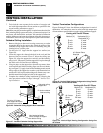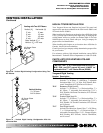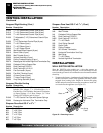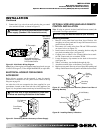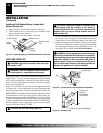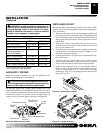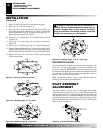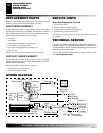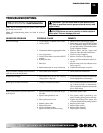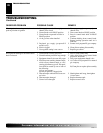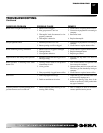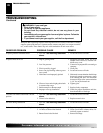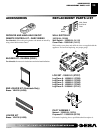Special offers from our partners!

Find Replacement BBQ Parts for 20,308 Models. Repair your BBQ today.

105706-01B
For more information, visit www.desatech.com
For more information, visit www.desatech.com
22
OPERATING FIREPLACE
FOR YOUR SAFETY
READ BEFORE LIGHTING
WARNING: If you do not follow these instructions
exactly, a fire or explosion may result causing prop-
erty damage, personal injury or loss of life.
A. This appliance has a pilot which must be lighted by hand.
When lighting the pilot, follow these instructions exactly.
B. BEFORE LIGHTING smell all around the appliance area
for gas. Be sure to smell next to the floor because some gas
is heavier than air and will settle on the floor.
WHAT TO DO IF YOU SMELL GAS
• Do not try to light any appliance.
• Do not touch any electric switch; do not use any phone in
your building.
• Immediately call your gas supplier from a neighbor’s
phone. Follow the gas supplier’s instructions.
• If you cannot reach your gas supplier, call the fire department.
C. Use only your hand to push in or turn the gas control knob.
Never use tools. If the knob will not push in or turn by
hand, don’t try to repair it, call a qualified service techni-
cian or gas supplier. Force or attempted repair may result
in a fire or explosion.
D. Do not use this appliance if any part has been under water.
Immediately call a qualified service technician to inspect
the appliance and to replace any part of the control system
and any gas control which has been under water.
CLEANING AND MAINTENANCE
OPERATING FIREPLACE
For Your Safety Read Before Lighting
CLEANING AND
MAINTENANCE
WARNING: Turn off fireplace and let cool before
cleaning.
CAUTION: You must keep control areas, burn-
ers, and circulating air passageways of fireplace
clean. Inspect these areas of fireplace before each
use. Have fireplace inspected yearly by a qualified
service person. Fireplace may need more frequent
cleaning due to excessive lint from carpeting, bed-
ding material, pet hair, etc.
WARNING: Handle glass door panels with care. Do
not strike, slam or otherwise abuse glass doors. Do not
operate appliance with panel(s) and glass removed,
cracked, or broken. Replacement of the panel(s) should
be done by a licensed, qualified service person.
GLASS DOOR PANELS
Any household glass cleaner may be used to clean the glass panel.
Do not use abrasive cleaners as this may damage the glass. Clean
glass only when cool.
WARNING: Do not operate fireplace with the glass
doors removed, cracked, or broken.
CAUTION: Do not vacuum if pieces are hot.
CAUTION: If the glass breaks, be cautious of frag-
ments on the floor. Keep children away from the area.
Do not operate the unit. Use proper safety gloves to
remove the broken glass door. Discard safely. A glass
door kit can be ordered through your local distributor.
Do not substitute other material for the glass.
PILOT AND BURNERS
• Remove ember material before cleaning burners and replace
when cleaning is complete.
• Burner and controls should be cleaned with compressed air to
remove dust, dirt, or lint.
• Use a vacuum cleaner or small, soft bristled brush to remove
excess dust, dirt, or lint.
LOGS
• If you remove logs for cleaning, refer to Installing Log Set, be-
ginning on page 18, to properly replace logs.
• Use a vacuum cleaner to remove any carbon build-up on logs.
• Replace log(s) if broken. See Replacement Parts on page 23.
• Replace ember material periodically as needed. See Replace-
ment Parts on page 23.
VENTING SYSTEM
Conduct annual inspection of the venting system following these
guidelines:
1. Check areas of venting system that are exposed to the weather for
corrosion (rust spots or streaks and, in extreme cases, holes). Have
these items replaced immediately by a qualified service person.
2. Remove the vent cap and shine a flashlight into the vent. Re-
move any foreign material.
3. Check for evidence of excessive condensation. Continuous con-
densation can cause corrosion of caps, pipes, and fittings and can
be caused by having excessive lateral runs, too many elbows, or
exterior portions of the system being exposed to cold weather.
4. Inspect joints to verify that no pipe section or fitting has been
disturbed and loosened. Check mechanical supports such as
wall straps for rigidity.



